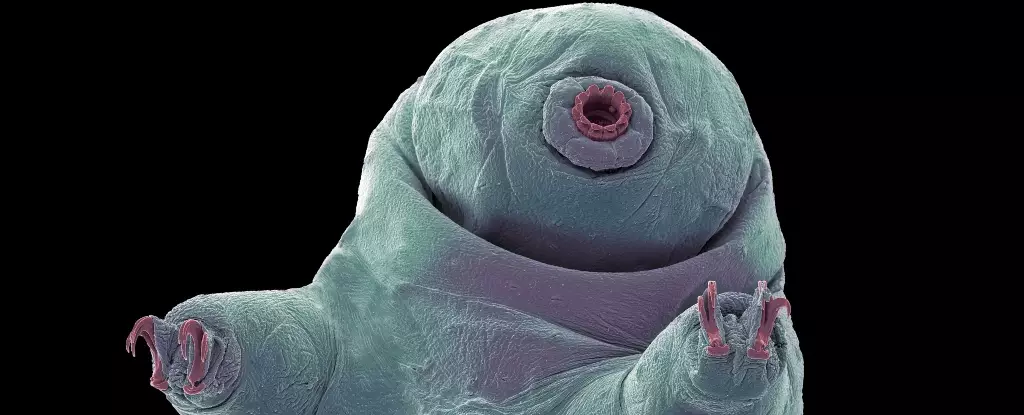The 2025 Lunar and Planetary Science Conference held from March 10–14 in The Woodlands, Texas, was a hotbed of innovation and groundbreaking research, bringing together scientists, enthusiasts, and explorers united by a common aim: deciphering the mysteries of space and enhancing human adaptability beyond our planetary boundaries. Among the myriad proposals presented, one theme resonated profoundly—how can humanity not only endure but thrive in the inhospitable environments of space and other celestial bodies? A compelling study spotlighting the often-overlooked tardigrade or “water bear” could serve as an invaluable asset in answering this pressing dilemma.
The Incredible Tardigrade
Tardigrades have gained popularity not merely as a topic of fascination but as a pivotal subject in astrobiological research. These nearly indestructible micro-animals have captivated the scientific community due to their extraordinary ability to survive extreme conditions—temperatures spanning nearly 300 degrees Celsius, staggering pressures, and even the vacuum of space. Conducted by NASA ambassador and astronaut candidate Isadora Arantes and Professor Geancarlo Zanatta, this research harnesses the unique properties of tardigrades to investigate solutions for human survival in extraterrestrial environments.
The prime focus of their investigation lies in a protein known as Dsup, or Damage Suppressor. This remarkable biological feature appears to erect a robust barrier around the cell’s genetic material, protecting it from harmful radiation exposure. By utilizing advanced molecular simulations through Gromacs software, the researchers demonstrated how Dsup minimizes genetic mutations and maintains the integrity of DNA in extreme environments—an insight that doesn’t just hint at possibilities but opens an entire spectrum of research avenues for space travelers.
Survival Beyond Earth
The implications of this study extend far beyond theoretical discussions. By drawing parallels between tardigrade resilience and the prospects of extraterrestrial life, the researchers identify potential life forms that may share similar adaptations as tardigrades, suggesting that Mars, Titan, and Europa could host life under their harsh conditions. Notably, as Mars presents a landscape riddled with radiation and sporadic water sources, the icy surfaces of Titan and Europa offer liquid water, albeit in cryogenic settings.
The research prompts an intriguing question: if tardigrades can survive in such environments, might there be other forms of life displaying enduring traits suited to extreme settings in our universe? This paradigm shift not only influences astrobiology but also pushes the boundaries of how we define life itself.
Implications for Biotechnology
Arantes and Zanatta do not limit their exploration of tardigrades to interstellar inquiries; they also reveal applications that can revolutionize biotechnology here on Earth. The findings could inform techniques to boost human resilience against radiation, cold, and other extreme conditions. Imagine engineering hardier crops capable of flourishing amid climate chaos or developing human cells that can withstand harsh environmental challenges—this kind of research could significantly contribute to mitigating the impacts of climate change.
The diversification of practical applications derived from this research underscores the necessity of integrating biological adaptability into our quest for resilience, not just in space but back on our home planet. According to Arantes and Zanatta, the challenges faced by humanity are intrinsically linked to the prospects of life itself. The utilization of extremophiles like tardigrades may hold the key to overcoming obstacles that hinder human progression—both on Earth and in the cosmos.
The Path Ahead
The frontier of space exploration is broad and filled with unanswered questions, making the need for more nuanced research essential. As Arantes and Zanatta emphasize, pursuing integrated computational and experimental methodologies is crucial for unlocking the mechanisms of life adaptations. Only through a multi-faceted approach can scientists hope to mirror the resilience of extremophiles and apply such bioengineering discoveries to future missions.
Through this innovative lens, researchers are moving closer to realizing a dream that once seemed relegated to science fiction—the capability for human beings to adapt, survive, and thrive amid the cosmic unpredictability of the universe. Tardigrades have illustrated not just the resilience of life on Earth, but they also cast new light on the potential future of astrobiology, biotechnology, and human adaptability as we venture into the unknown.


Leave a Reply